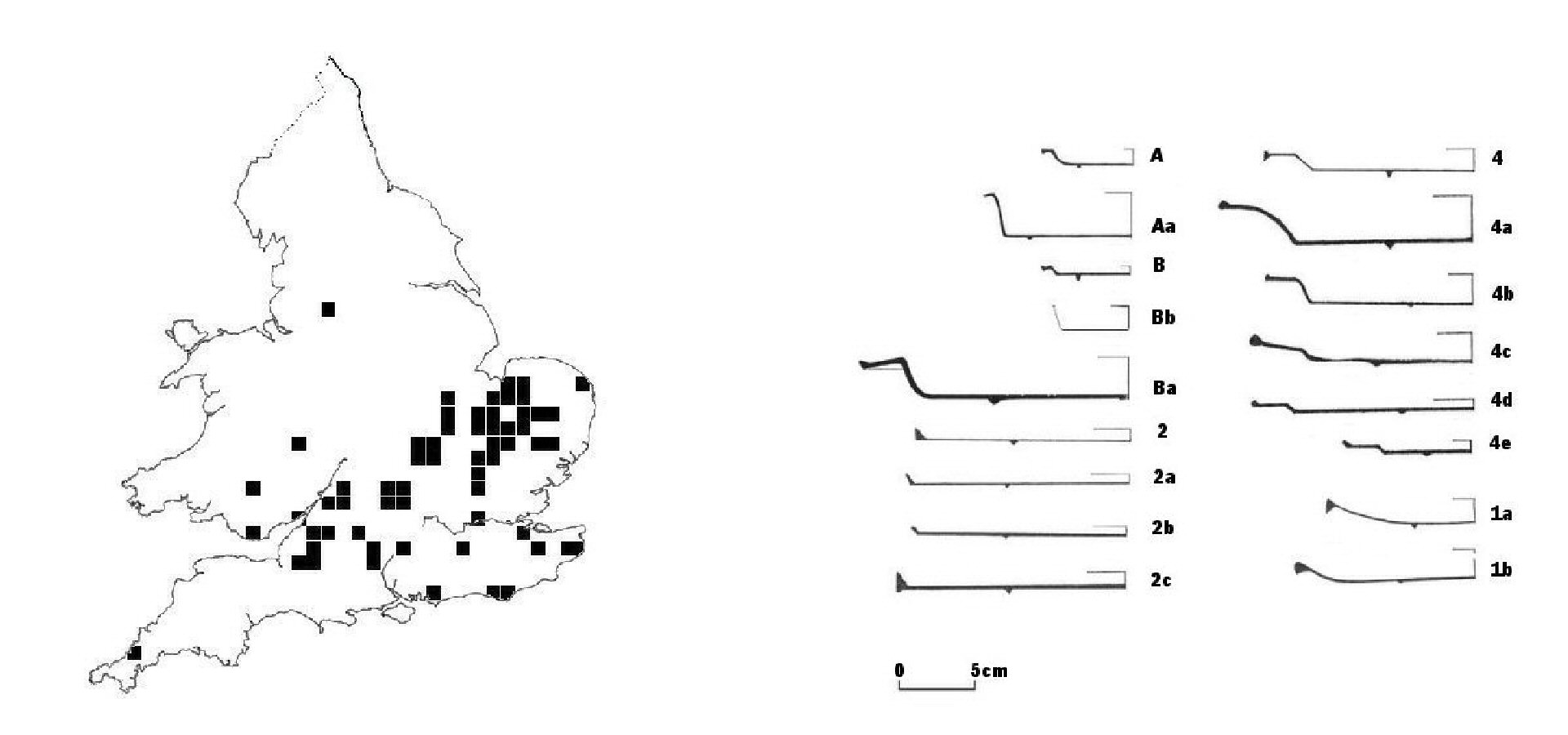The typology for plates was created by Peal (1967) and modified by Lee (2009, 68-75). Dishes occur in 6 forms [types A-B and 1-4] and are broadly dated to 1st-5th century AD. Dishes mostly occur in a band across Britain running from Cambridgeshire to Mendip and occur equally on urban and rural sites.
Distribution
Dishes follow the pattern for most RB pewter occurring from Cambridgeshire to Mendip with outliers, especially in the southwest. Type 4-4e, A-Bb; 5; 3 and 2 dishes seem to mostly occur in Cambridgeshire, but are not exclusive to the region. Dishes occur roughly equally on urban and rural sites but the majority of finds contexts for dishes are unknown.

Forms
Shallow semi-spherical dishes with a beaded rim [type 1a-1b(i)]. Flat bottomed dishes with a bead and a curved [type A-Aa] or straight everted [type B-Ba(ii); Bb] wall, although this difference is debatable (Peal 1967 fig.4). Flat side bottom dishes with bead but with a slight curve [type 4b], maybe a derivative of type Aa dishes. Flat bottom curved dishes with a flange and bead [type 4c-4c(i)] are likely a derivative of type Ba dishes. Other shallow flat bottomed dishes with a flange, rim and everted straight side [type 4; 4e; 4d-4d(ii)] are also likely derivatives of type B. The flat bottomed dish with curved wall and bead [type 4a-4a(i)] was likely a derivative of type Ba(ii). Although likely a derivative of type Ba dishes, type 4(i) dishes are unique in having a double flange.
Bent flat dishes are truly flat with a bead or shallow straight everted side [type 2-2a; 2b-2b(i); 2c]. Variations of type 2 plates include shallow dishes with a distended wall [type 2a(i)-2a(iii)] which are perhaps best described as plates (though they are not so classified here). Peal's (1967) type 3 dishes are not discussed here.
Chronology
Type A and B dishes seem to set the precedent for dishes occurring in 1st-2nd century AD contexts. Conversely, type Aa, Ba-Ba(i) and Bb dishes all have a 4th century AD date. Types 1 dishes seem to occur from the 2nd-4th century, though there are few known datable examples to justify this conclusion. The few dates for type 2 dishes seem to indicate a 3rd-5th century data range. Type 4 dishes have a 4th-5th century AD date range with 4a dishes having the narrower date range of 3rd-4th century AD, and type 4 dishes a date range possibly of 2nd-5th century AD. Known type 4d; 4e and 5 dishes dates all indicate a 4th century AD date, although the possibility of a later date does exist for some 4d examples.
References
Lee, R. 2009. The Production, Use and Disposal of Romano-British Pewter Tableware. Oxford: Archaeopress.
Peal, C. 1967. Romano-British pewter plates and dishes. Proceedings of the Cambridge Antiquarian Society, 60, 19-37.